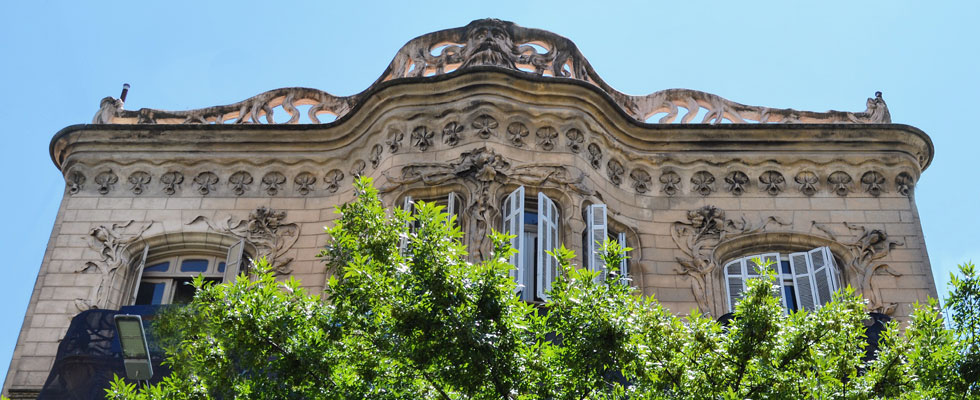9.30am | Little details in big buildings
Present in tours
On Rivadavia, and then along Avenida de Mayo, we'll find a diverse range of stories. Are first point of call is the Palacio de los Lirios (Av. Rivadavia 2031), named after the many lilies (lirios in Spanish) in the building's elaborate facade. The three-storey office and apartment building had an ondulating form redolent of Gaudi's work in Barcelona.
There's a similar building a few metres on (Av. Rivadavia 2009), with decorations reminiscent of Catalunya's Casa Batlló, and railings reminiscent of the Puerta del Dragón at Palacio Güell. While the building has no official name, it's known by the phrase engraved below its monumental dome: “No hay sueños imposibles” (there are no impossible dreams).
Following Avenida Rivadavia, you'll reach the intersection with the street called Entre Ríos. Opposite the National Congress building, there's a replica of Auguste Rodin's scultpure "The Thinker". Inaugurated in 1907, the piece was created from an original mould by the artist himself and is signed by Rodin.
The famous Avenida de Mayo starts in this square, and is home to more of Buenos Aires architectural secrets. At Avenida de Mayo 1370, you'll find Palacio Barolo , named after the textile magnate who ordered its construction. You won't see the connection at first glance, but the building is an incredible architectural hommage to The Divine Comedy, full or architectural allusions to Dante Alighieri's epic poem (it's even organised into three parts: hell, purgatory and heaven).
The Barolo is on the same block as the former Hotel Majestic (Av. de Mayo 1317), once one of the city's most luxurious hotels, where choreographer Vaslav Nijinsky got married and the architect Le Corbusier once stayed. The building was inaugurated in 1909 and preserves its academic style. It's now home to Argentina's federal revenues office, and has an exhibition space dedicated to historic items associated with tax collection.
The neighbouring Hotel Castelar (Av. de Mayo 1152), designed by Mario Palanti, the man behind the Barolo, was a favourite with intellectuals and writers such as Oliverio Girondo, Norah Lange and Armando Discépolo, who ran a literary group here. But the hostels most famous guest was Spanish poet Federico García Lorca, who stayed here for six months in 1933. There's a plaque commemorating the poet's stay.
Guiaded tours
Other options

